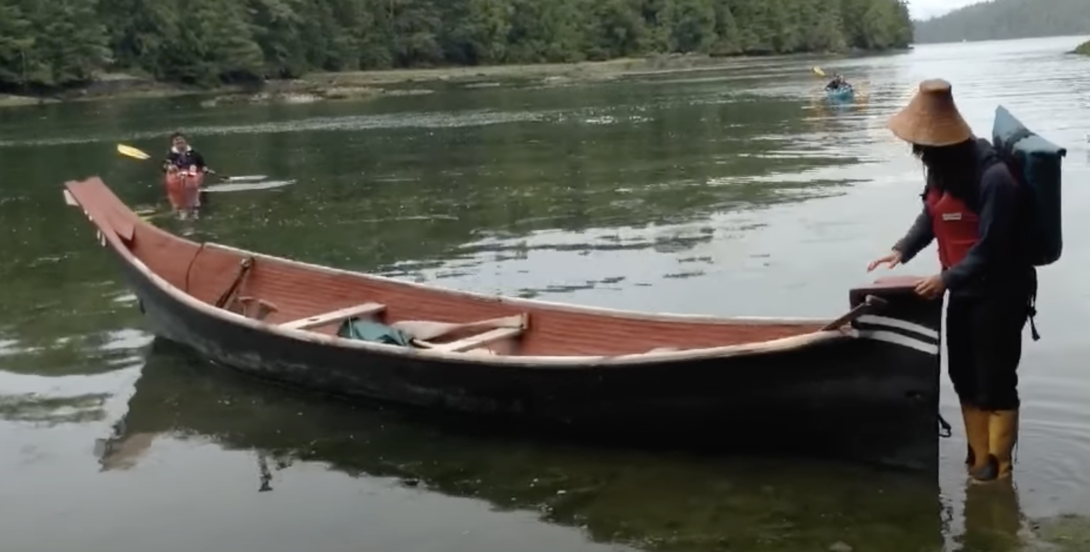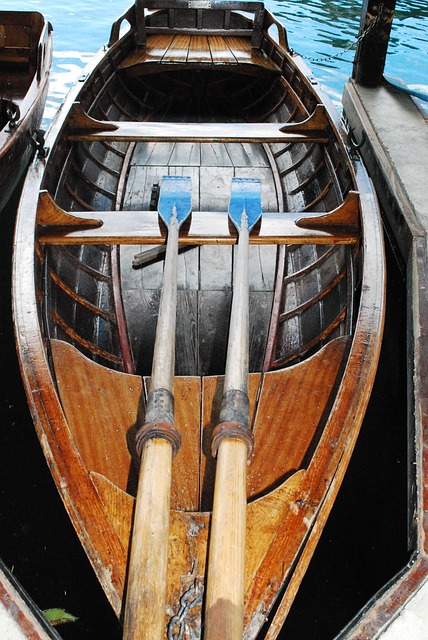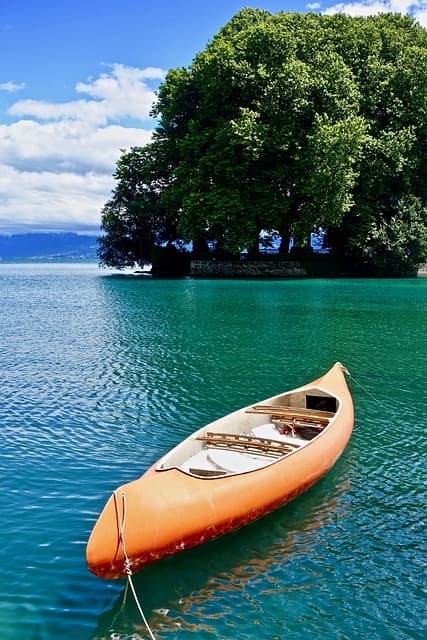Sigurd Olson’s timeless words echo through history: “The canoe’s way is synonymous with the path of the wilderness and the essence of a nearly forgotten liberty.” The sense of freedom that comes with navigating the natural world in a low-profile vessel has remained a constant for paddlers across diverse cultures for millennia. This practice traces back to ancient times, reaching back even to the Stone Age. The earliest incarnations of the canoe, designed for optimal water passage, likely resemble the familiar form we recognize today. Such canoes have a storied history, appearing across various ancient civilizations globally. However, determining the true originators of this remarkable invention necessitates meticulous investigation.
Tracing the Origins of Canoe Building
Given the canoe’s existence across countless centuries preceding recorded history, pinpointing its original inventor, as well as that of the kayak, becomes a near-impossible task.
- Archeological finds connected to canoe development dot diverse regions including North America, the Polynesian expanse, equatorial rainforests, and Europe;
- Each discovery of an ancient canoe artifact brings researchers closer to unraveling the origins of these remarkable vessels;
- In a pursuit to unveil the minds behind the canoe’s inception, its birthplace, and the methods used, one story emerges: a tale of a canoe stumbled upon by chance in the waters of Old Tampa Bay, Florida, in 2001;
- A decade later, after diligent excavation, this 1,100-year-old canoe surfaced, constructed from aged pine, spanning over twelve meters in length – a giant in its category. Notably, this canoe was an anomaly, resting in a saltwater environment rather than the typical freshwater domains of rivers and lakes.
The canoe’s creation is attributed to the Manasota, a prehistoric Native American community residing in the Tampa Bay vicinity. The possibility arises that this group could be the architects of the conventional canoe.
The Ancient Pesse Canoe: A Remarkable Find
Further exploration reveals an even more ancient example, outshining the Manasota canoe as a true testament to primitive ingenuity. This relic hails from the coastal confines of northwestern Europe. A dugout canoe found in the Dutch village of Pesse in 1955 is the earliest documented watercraft discovered. This Stone Age artifact’s roots reach back roughly ten thousand years, pre-dating history as we comprehend it. The canoe’s antiquity led to skepticism, prompting scientists to craft a replica to verify its buoyancy. Hewn from Scotch pine, this canoe resides within the Drents Museum in the Netherlands, showcasing an age-old testament to aquatic travel.
Design and Function in Prehistoric Times
As humanity acquired advanced tools, such as chisels and axes, the art of canoe crafting flourished. Initial efforts involved using rocks and metals to sculpt tree trunks. Progress then enabled the use of fire for quicker core excavation.
Among the earliest uncovered prehistoric canoes, several were carved or dug from logs, built to accommodate one or two occupants. These vessels served dual roles: hunting and material transport. Later iterations featured bark construction, meticulously piecing together layers in the hydrodynamic form recognized today. Prehistoric North American canoes excelled in light-duty use, navigating lakes and streams, manageable with just one or two paddles. Their lightweight design facilitated portage on land.
Seafaring Canoes and Ocean Voyages
Remarkably sturdy outrigger canoes graced Polynesian islands, tailored to brave tumultuous ocean conditions. Elaborate canoes, constructed from interconnected sections adorned with ornate carvings, mirrored others found within diverse cultures. These enduring vessels facilitated journeys from East Polynesia to New Zealand, a feat of remarkable achievement even by present-day standards.
The canoe’s historical imprint on early settlements and maritime trade is palpable in the Mediterranean. Proof lies in trade evidence from islands that predate ancient Egypt and Greece, showcasing the conveyance of valuables like obsidian via watercraft.
Evolution of Canoe Materials
As technological advancements dawned, canoe construction paralleled skin boat methods. Wooden frames enveloped in canvas or sealed with rudimentary caulk became the norm. The 19th century saw wood-and-canvas canoes surpass birch bark designs, and later, wartime efforts birthed aluminum canoes. Today’s iterations incorporate plastics, carbon fiber, and fiberglass, surpassing ancestral possibilities in strength and weight.
A Quirky Innovation: The Concrete Canoe
Innovation knows no bounds, even stretching to the realm of concrete canoe creation, as demonstrated in an annual engineering competition challenging students to craft functional canoes from this unconventional material. While concrete’s buoyancy remains a challenge, this contemporary endeavor amuses, highlighting the stark contrast between modern engineering and ancestral design.

Canoes: Bridging Time and Purpose
Canoes stood as lifelines for ancient civilizations, facilitating fishing, supply transport, and cross-cultural exchange. Today, canoes serve as gateways to tranquility, connecting modernity’s noise with nature’s serenity. This enduring vessel preserves Olson’s “almost forgotten” freedom, unfazed by technological strides.
Conclusion: The Enigmatic Canoe’s Legacy
In the mosaic of human history, the canoe stands as an emblem of humanity’s inexhaustible curiosity and resilience. It symbolizes the quest for exploration, the search for resources, and the yearning for connection. The canoe, whether hand-carved from logs or molded from modern materials, has transcended time, cultures, and continents. Its legacy, woven through millennia, tells a story of human adaptability and innovation.
- While the origins of the canoe remain shrouded in obscurity, the absence of a singular inventor only enhances its mystique. Like a shared language understood by diverse cultures, the canoe unites us across time and space, bridging the gap between primitive and modern eras. It encapsulates the spirit of freedom that has guided humans through the ages, a reminder that the call of the wilderness and the serenity of untouched waters are universal lures;
- As we glide across tranquil lakes, navigate winding rivers, or brave the open seas, we echo the journeys of those who came before us. The canoe carries their stories, dreams, and aspirations, etched into its very structure. Through canoes, we explore not just the landscapes around us, but the depths of our shared history. The canoe’s invention, attributed to countless anonymous minds, reflects the essence of collaboration and the collective yearning to conquer the unknown;
- Today, as modern canoes are fashioned from lightweight materials, equipped with advanced technologies, and celebrated in races and competitions, we remain indebted to the primitive designs that started it all. From the first courageous paddlers who ventured into uncharted waters to the inventive minds who embraced new materials and methods, the legacy of the canoe is a testament to the indomitable spirit of human endeavor.
So, as we dip our paddles into the water, we acknowledge the unbroken chain of explorers, innovators, and dreamers who have contributed to the canoe’s evolution. With each stroke, we propel ourselves forward in time, contributing to an ongoing narrative that began in the distant past and will continue to shape the future. The canoe is more than just a vessel; it’s a living connection to our ancestors, a vessel of dreams, and a beacon of the boundless possibilities that await us when we dare to embark on our own journeys of discovery.



